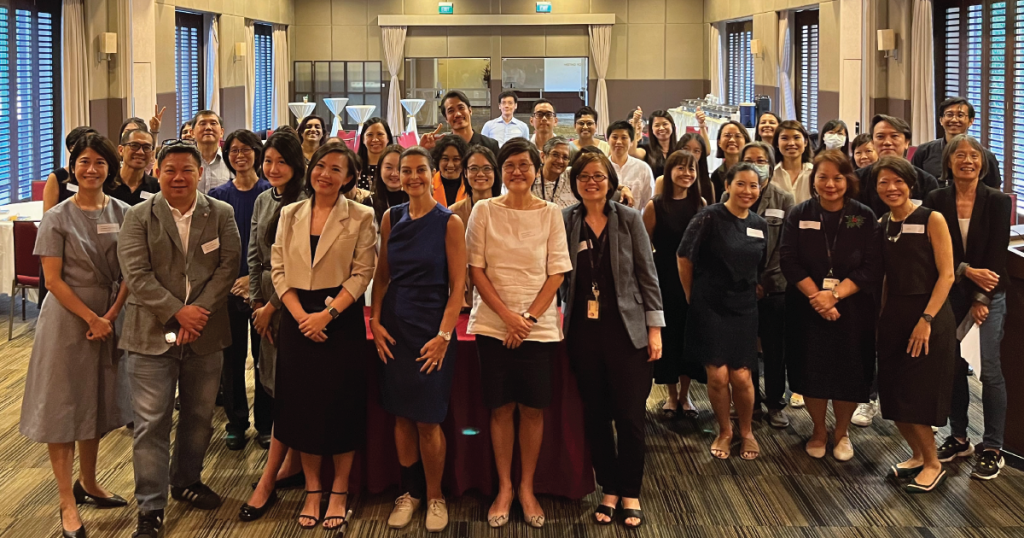
To create a successful business, we need to bring together our human powered talents and our technology. The two must work together for businesses to thrive. Introducing new technologies in the workplace is a positive step in the future of work. The proper response to automation must be serious retraining to give people the skills to get a new job. So that humans and technology can work together in the future. Having the technology in our workplace will be fundamental as will capturing data and utilising that data in the smartest way possible.
“The world of work is changing at a rapid pace.”
This is a statement that all of us have heard perhaps many times over and especially since the pandemic. We know that digital skills are key for career success in the future of work and we know that continual learning is the only way to achieve true career progression.
We also know that the way in which we work will continue to evolve. This is true for our customers, our industry, and our workplaces. For 60% of jobs that are currently in the market, 30% of their activities are automatable – leading us into a hybrid workplace where AI and people will work together.
To create a successful business, we need to bring together our human powered talents and our technology. The two must work together for businesses to thrive. Introducing new technologies in the workplace is a positive step in the future of work. The proper response to automation must be serious retraining to give people the skills to get a new job. So that humans and technology can work together in the future. Having the technology in our workplace will be fundamental as will capturing data and utilising that data in the smartest way possible.
We’re seeing the application of AI resulting in increased job satisfaction and new job creation. Imagine if you are a highly skilled individual that is spending their entire day looking at images or watching a live stream video of a conveyor belt waiting to identify a blockage. You’d probably get bored quickly, your job satisfaction would not be good.
If there’s an AI system assisting you, you can focus your efforts on higher value activities, enabling you to be more creative and come up with new ideas and create opportunities; that’s what we’re seeing AI do in industry.
Many people are concerned that this new technology will replace jobs, but we are finding it the opposite. We are working with an organisation who used one of our AI powered systems to conduct approx. 80,000 hours of human equivalent work in 6 months period. Not a single job lost. All the people directly impacted have reported increased job satisfaction as they are not spending their day manipulating data, instead they can focus on other key priorities.
Estimates from World Economic Forum indicate that by 2025, 85 million jobs may be displaced by a shift in the division of labour between humans and machines, while 97 million new roles may emerge that are more adapted to the new division of labour between humans, machines, and algorithms.
Just as science and technology have innovated other industries, there are now more tools at our disposal in the talent space. These tools save us time by automating mundane tasks. They also generate data about things such as candidate behaviour traits, employee engagement levels and workforce dynamics. This information can foster smarter recruiting decisions from matching candidates to jobs with better precision to improving diversity and inclusion initiatives.
While most organisations recognise the vital importance of data – and of leveraging it to make smarter, better decisions – many are also unsure exactly where to start, or what steps to take next.
In our industry, much of this will come down to our recruitment consultants. They are the front line, they are the ones collecting the data, assessing the data, and reviewing the data to get people into jobs and fulfill client demands. They are cornerstone to the business and are best positioned to understand the data and how it can be used.
I believe, that if we bridge together recruitment consultants with the data analysis that is required that there will be a new role that is formed. This role of the future is a Recruitment Scientist.
Recruitment scientist is not an official job title right now, but it will be in the future. At the very least, future talent acquisition roles will require elements of what we’re calling, recruitment science.
So, what is recruitment science? It’s a way of approaching talent acquisition using more scientific methods like data analysis. This data can help assess candidate personalities, get a pulse of employee happiness, and predict future workforce needs.
In collaboration with Sam Zheng at Curious Thing, we have developed our Recruitment Scientist white paper that discusses AI and people analytics in the future of work, particularly in the recruitment sector. I invite you to download a copy of this paper right here.










